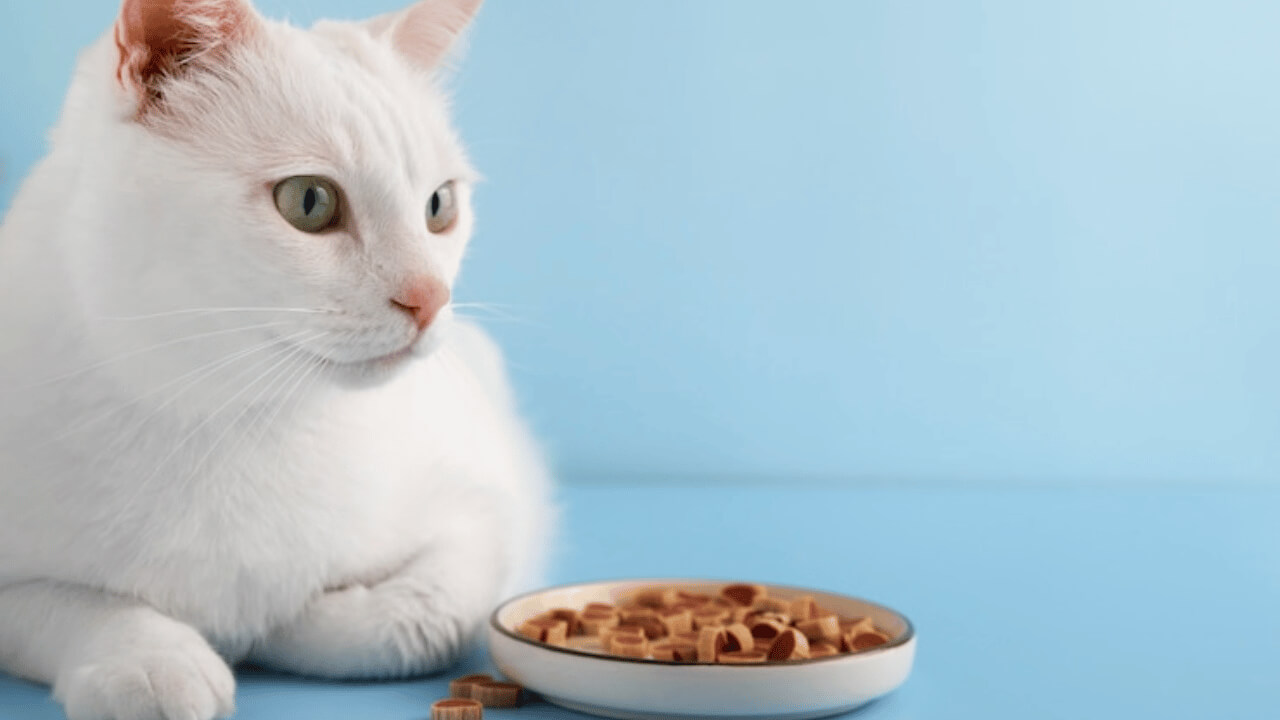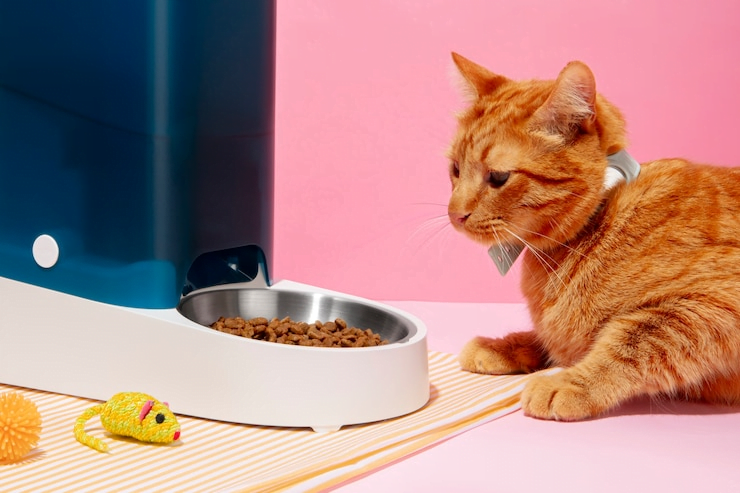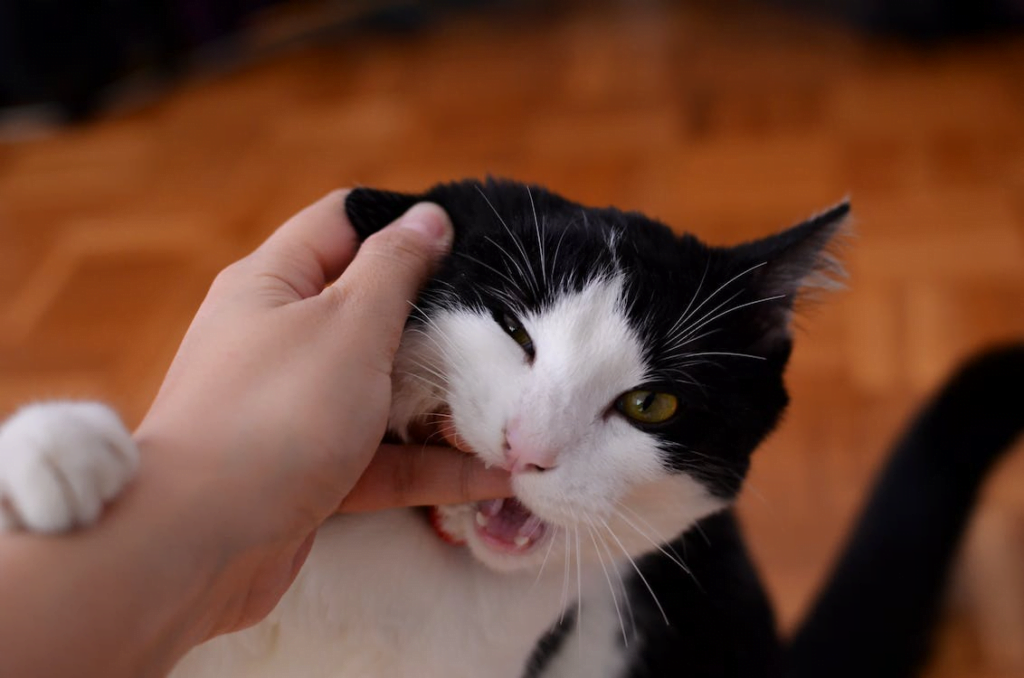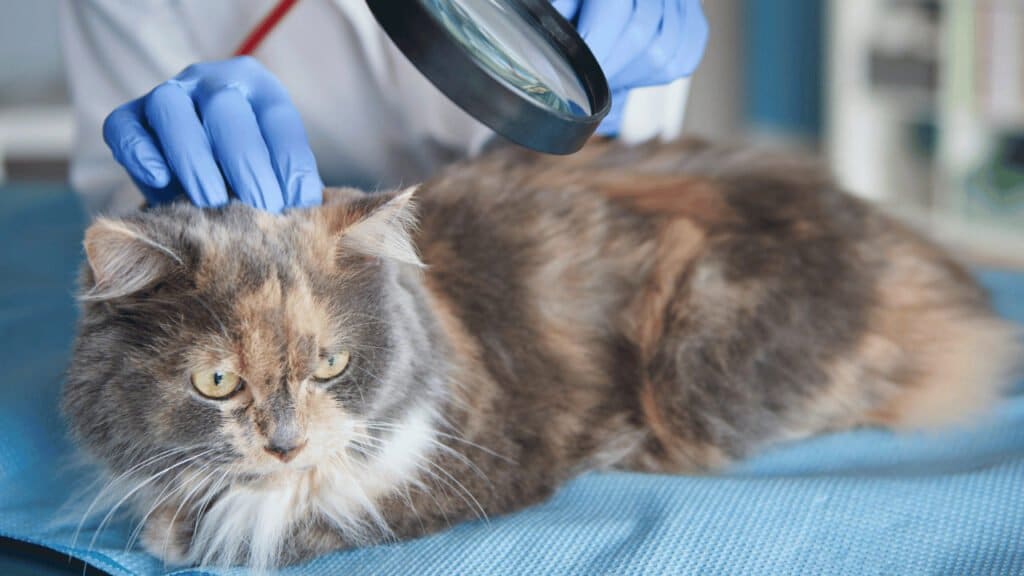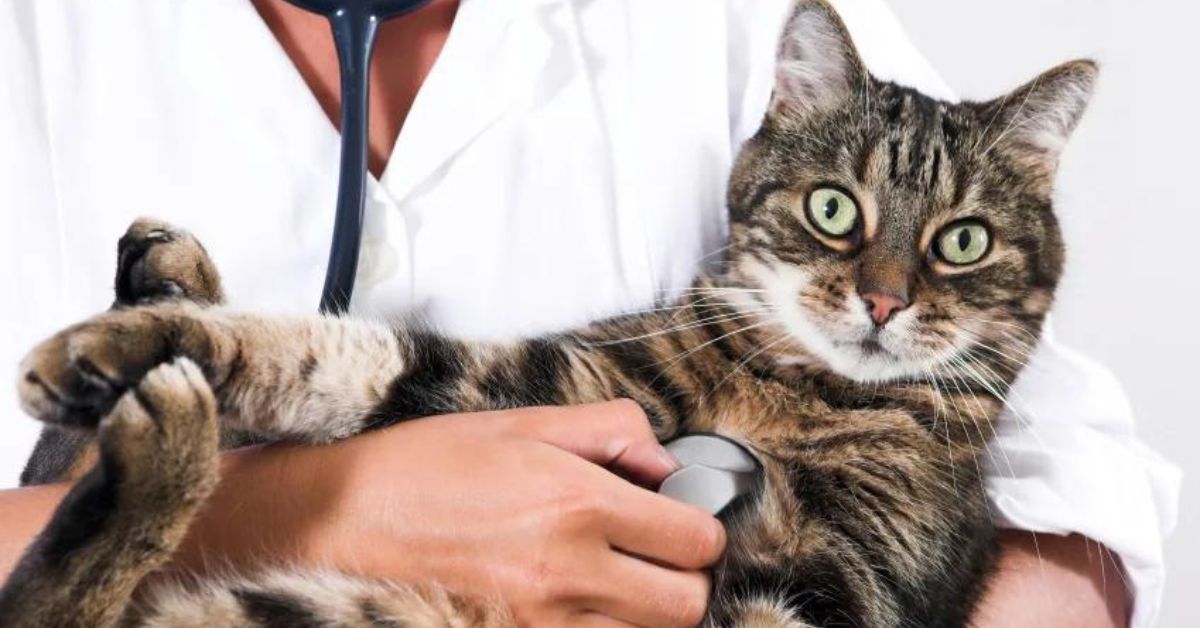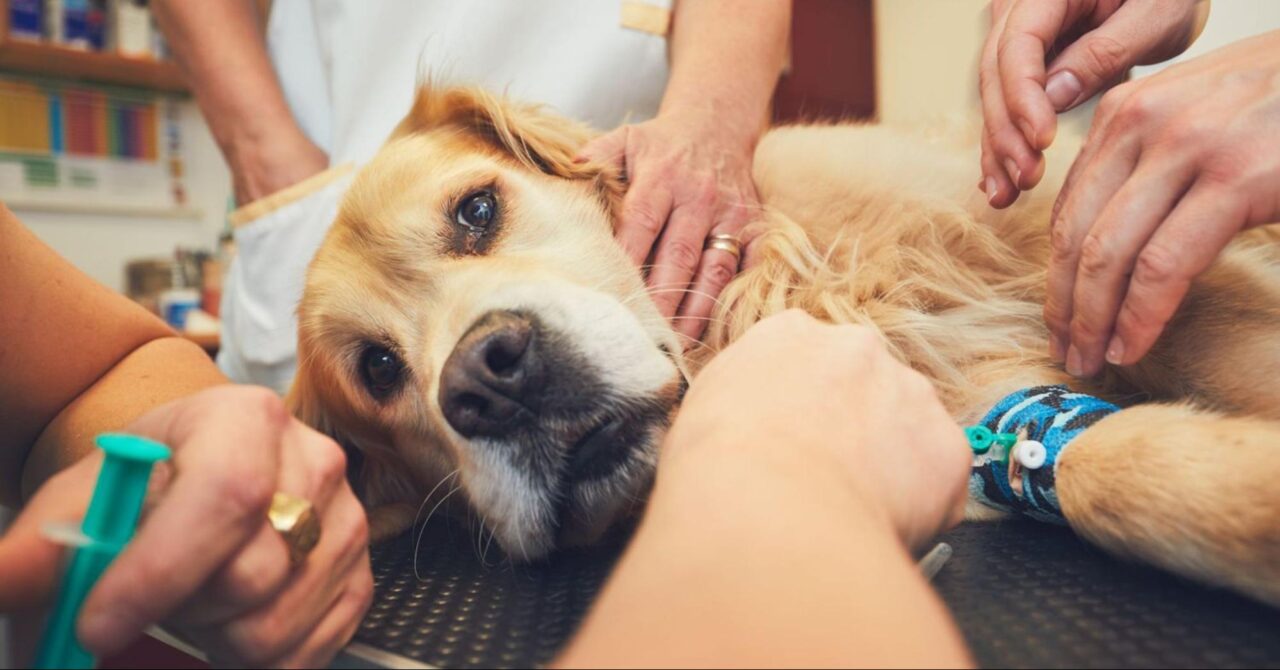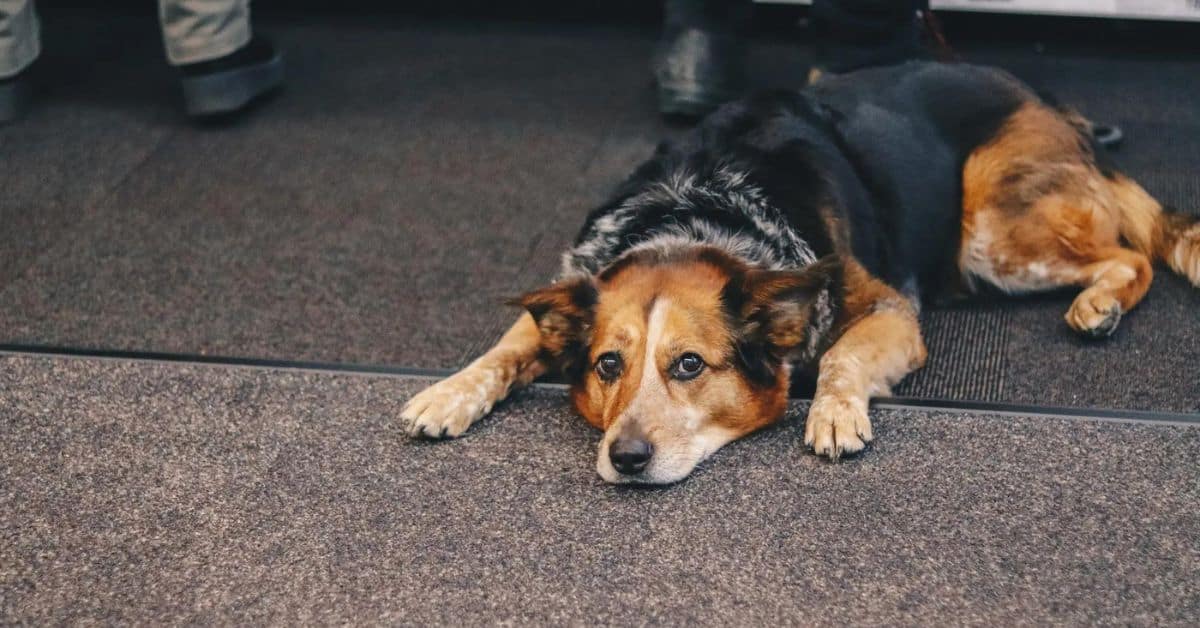Cat brown eye discharge can indicate several health problems, such as infections or tear duct obstructions. Maintaining the health of your feline friend’s eyes requires an understanding of the causes and treatments. This guide looks at typical causes of cat eye discharge, works well for treating it, and offers preventative tips. Recognize the warning signals and when to seek veterinary attention to maintain the health and clarity of your cat’s eyes.
Cat Brown Eye Discharge
Cat brown eye discharge can be indicative of several underlying conditions. This reddish-brown staining can result from respiratory infections, bacterial infections, or viral conjunctivitis.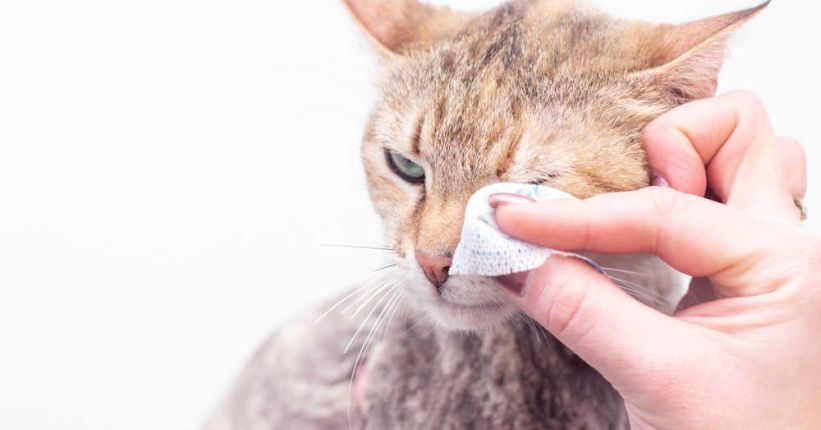
Often, it is related to issues with tear ducts, where insufficient drainage or excess tear production leads to ocular discharge. Eye conditions, including conjunctivitis in cats, can cause watery discharge and crusty formations around the eyes. Environmental irritants or foreign bodies might also trigger this type of discharge in cats.
Certain cat breeds with unique facial anatomy, such as Persians, are more susceptible to these issues. Regular veterinary attention is essential for diagnosing and treating the cause, which may involve antibiotic eye drops, oral medications, or even surgical intervention for severe cases. Maintaining eye health through proper cleaning with a cotton ball and using artificial tears can help manage symptoms. Avoiding allergens and ensuring good overall ocular health is crucial. Veterinary care should be sought promptly to prevent severe damage or chronic infections.
What is eye discharge in cats?
Eye discharge in cats can manifest as watery, gooey, or crusty formations around their eyes. This condition can result from various underlying factors such as respiratory infections, bacterial infections, viral conjunctivitis, or foreign bodies irritating the eye. Eye conditions like conjunctivitis in cats often cause an overflow of tears due to issues with tear production or drainage of tears. Certain cat breeds with unique facial anatomy, particularly those with squished-in faces, are more prone to tear staining and reddish-brown discharge.
Excess tear production or insufficient tear drainage can lead to brownish eye discharge and nasal discharge, indicating the need for veterinary attention. Treatment may include cleaning with a fresh cotton ball, using artificial tears, or applying antibiotic ointment and eye drops. Regular veterinary care is crucial to address the underlying condition and prevent severe damage or chronic infections. Maintaining ocular health through proper hygiene and timely medical attention helps in managing eye irritation and other related issues in your feline friend.
How to treat eye discharge in cats
To treat eye discharge in cats, start by identifying the underlying cause, which could range from a respiratory infection or viral conjunctivitis to a bacterial infection or foreign bodies in the eye. Veterinary attention is crucial for an accurate diagnosis and treatment plan.
Treatment options may include cleaning the eyes with a fresh cotton ball dipped in plain water or a saline solution to remove crusty formations and reduce skin irritation. For bacterial infections, antibiotic ointment or eye drops may be prescribed. In cases of viral infection, supportive care and eye medication are essential.
Cats with excessive tear production due to facial anatomy, like brachycephalic breeds, may require special attention to prevent tear staining and reddish-brown discharge. Regular veterinary care ensures that issues with tear ducts and drainage of tears are addressed, preventing severe damage.
In some cases, oral medications or surgical intervention might be necessary. Using artificial tears can help manage dryness and maintain a healthy tear film. Always consult with a veterinarian for the best course of action to maintain your feline friend’s ocular health.
What are the signs of epiphora?
Epiphora, also known as excessive tearing, can manifest in several ways that signal the need for veterinary attention. The most common signs are:
- Wetness or dampness beneath the eyes: This constant moisture can irritate the skin, leading to redness and potential infection.
- Reddish-brown staining of the fur: Tears contain pigments that can stain the fur, particularly noticeable in light-colored cats. Look for this staining, especially in the inner corners of the eyes.
- Skin irritation or infection: The constant moisture from excessive tears can irritate the skin around the eyes, causing redness, inflammation, and even secondary infections.
- Tear streaking or staining on the face: You might see visible tracks of tears or staining on your cat’s fur running down from the eyes.
- Tears rolling down from the eyes: In severe cases, you might even observe tears overflowing from your cat’s eyes.
If you notice any of these signs, it’s important to schedule a visit with your veterinarian. Epiphora itself is not a disease, but a symptom of an underlying condition. Early diagnosis and treatment of the root cause can help prevent complications and ensure your cat’s eye health.
What is epiphora in cats?
Epiphora in cats refers to an overflow of tears from the eyes. Normally, a healthy eye produces a thin film of tears to lubricate and protect the surface of the eye. This tear film constantly drains through tiny channels called tear ducts located in the inner corner of the eye near the nose.
When this drainage system is disrupted, either by excessive tear production or insufficient tear drainage, tears overflow and become visible. Epiphora itself is not a disease, but a symptom of an underlying condition. It’s important to note that a small amount of brownish discharge around the corners of the eyes, especially in flat-faced breeds like Persians, might be normal.
However, excessive discharge, thick discharge, or discharge accompanied by other symptoms like squinting, redness, or pawing at the eye, warrants a visit to the veterinarian.
How do you treat epiphora in cats?
Unfortunately, there’s no one-size-fits-all answer because treatment for epiphora hinges on the underlying cause. A veterinarian will perform a comprehensive examination to identify the culprit.
If a blocked tear duct is the issue, flushing or even surgery might be necessary to open the blockage and allow for proper drainage. For infections like bacterial conjunctivitis, antibiotic eye drops or ointments are typically prescribed to target the specific bacteria. If allergies are suspected, your veterinarian might recommend allergy medications or suggest environmental changes to minimize your cat’s exposure to allergens. In some cases, surgical intervention may be required to correct eyelid abnormalities, such as inward-rolling eyelids (entropion) that irritate the eye and stimulate tear production or remove misplaced eyelashes (ectopic cilia) that scratch the cornea.
Remember, it’s crucial to avoid home remedies or using human eye drops on your cat. These can worsen the problem and irritate your feline friend’s delicate eyes. Early veterinary intervention is key to preventing complications from epiphora, such as infections or even permanent damage to the eye’s surface. Schedule a visit with your veterinarian if you notice any signs of excessive tearing in your cat.
How Can Watery Eyes in Cats Be Treated
Certainly! Watery eyes in cats can be caused by various factors, and treatment depends on the underlying cause. Here are some common approaches:
Conjunctivitis (Pinkeye):
If your cat’s eyes are inflamed, red, and have a watery discharge, they may have conjunctivitis. This common eye problem can result from infections, allergies, or dust. Most cases of pinkeye resolve without treatment, but if your cat seems uncomfortable, consult a vet. Antibiotics and antiviral drugs may be prescribed if needed.
Infections
Clear mucus suggests a viral infection, while green or yellow mucus indicates a bacterial infection. Lab tests can help identify the cause. Antibiotic eyedrops or ointments are often used to treat bacterial infections.
Allergies
Cats can be allergic to pollen, mold, dust, or other substances. Your vet can determine if your cat has an allergy and recommend appropriate treatment.
Why Are Your Cat’s Eyes Watering?
Certainly! Watery eyes in cats, medically termed epiphora, occur when excessive tears are produced or proper tear drainage is obstructed. Here are some common causes and treatments:

Conjunctivitis (Pinkeye)
-
- Inflammation of the tissues around the eyes, along with watery discharge, often indicates conjunctivitis (commonly known as pinkeye). It can result from infections, allergies, or dust.
- Feline herpes virus can also cause pinkeye. While a vaccine can’t prevent it, it can reduce symptoms. Stress management helps prevent flare-ups.
- Treatment: Antibiotics and antiviral drugs may be prescribed if needed.
Infections
- Clear mucus suggests a viral infection, while green or yellow mucus indicates a bacterial infection. Lab tests help identify the cause.
- Treatment: Antibiotic eyedrops or ointment for bacterial infections.
Allergies
Cats can be allergic to pollen, mold, dust, or other substances. Consult your vet for allergy diagnosis and treatment recommendations.
Remember, if your cat’s watery eyes persist or cause discomfort, seek veterinary attention for proper diagnosis and treatment.
Conclusion
In conclusion, managing cat eye discharge involves identifying the underlying cause and providing appropriate treatment. Regular cleaning, using prescribed medications, and ensuring adequate veterinary care are essential steps. Addressing issues like tear duct problems, infections, or anatomical abnormalities promptly can prevent severe complications. With proper attention and care, your feline friend’s eye health can be maintained, ensuring their comfort and well-being.
FAQ
Why is my cat leaking brown fluid from his eyes?
A brownish discharge known as epiphora, or overflowing tears in the eyes, happens when a cat’s eyes are not emptying properly. Usually, the discharge is not a big deal and may be removed with a moist cloth.
How do you stop cat eye discharge?
For mild eye discharge caused by irritants or allergens, gently cleaning your cat’s eye with a warm, damp cloth can provide some relief. However, remember that you should never attempt to use human eye drops, saline solutions, or any medication without consulting with your vet first.
How to naturally treat a cat eye infection?
There are various techniques for cleaning the eye. You can help clean the pus out of your cat’s eyes by moistening a cotton swab with sterile water. The most effective way to remove debris is to wipe the tear duct outward. A commercial cat-eye rinse purchased from a pet store can also be used to remove the eye.
Will my cat’s eye heal on its own?
Your cat’s eye infection may go away on its own in certain cases, or it may be a symptom of a more serious condition like feline herpes or feline calicivirus. In more serious situations, your veterinarian could recommend an antibiotic or eye ointment to help treat the illness.

